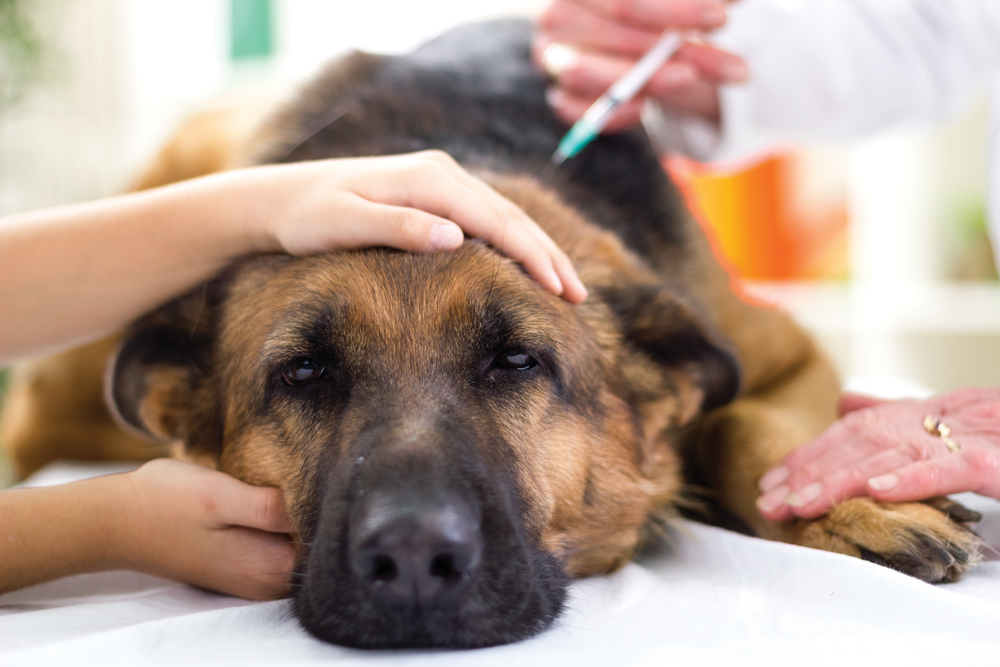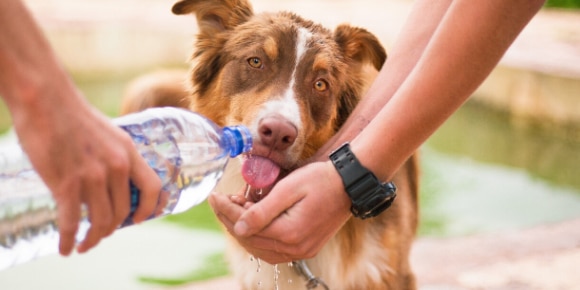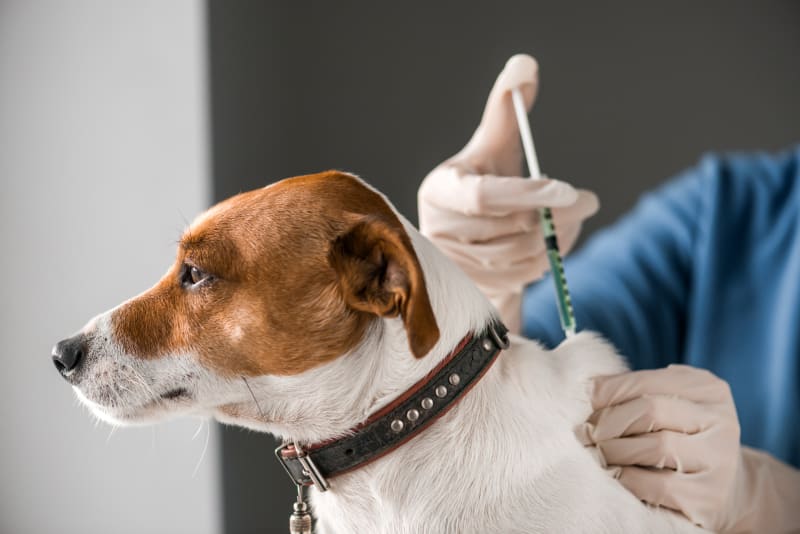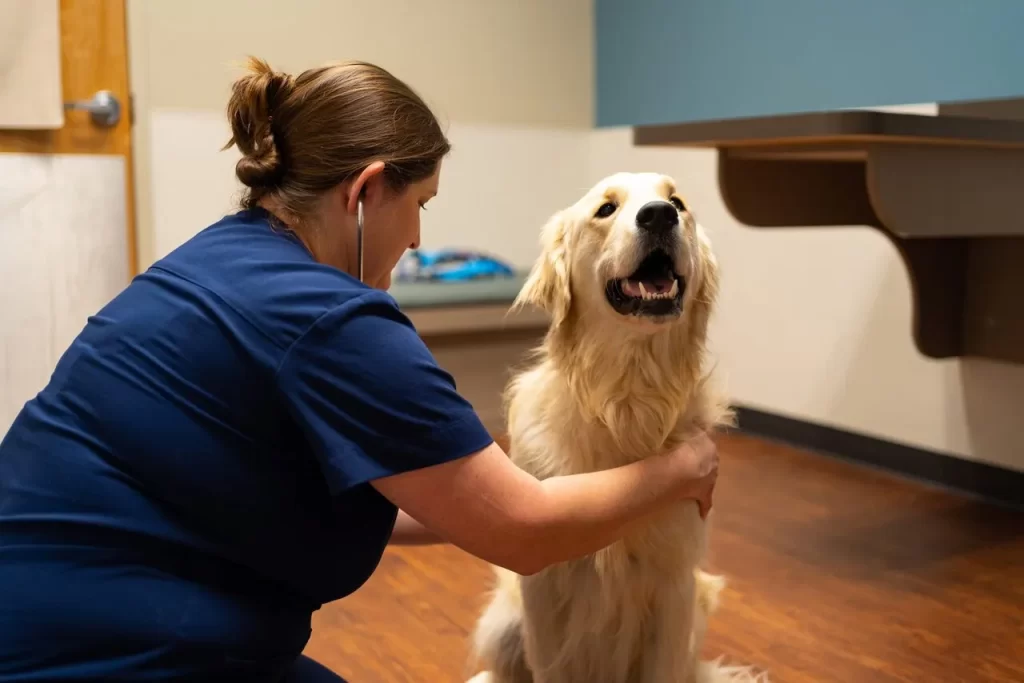TLDR;
If your dog is shaking and throwing up, it may be due to nausea, anxiety, poisoning, or illness. Act fast: remove food, give small amounts of water, and contact your vet if symptoms don’t improve.
Why Is My Dog Shaking and Throwing Up?

Your dog is likely shaking and vomiting because of either an upset stomach, toxin ingestion, extreme stress, or an underlying illness. These symptoms combined should never be ignored. Immediate action may prevent a worsening condition or even save your dog’s life.
At Careers Collectiv, we specialize in animal health education and provide knowledge that helps pet owners respond fast and appropriately in emergencies.
What It Means When Your Dog Is Shaking and Vomiting

Shaking in dogs can mean cold, anxiety, pain, or nausea. Vomiting often suggests gastrointestinal distress, food reactions, or exposure to toxins. When both happen at once, it’s usually a sign the body is in serious discomfort or reacting to something harmful.
Some shaking is normal, like after a bath or when excited. But if it’s happening with vomiting, it needs closer inspection.
Common forms of vomiting include:
- Regurgitation (undigested food coming up easily)
- Forceful vomiting (with bile, yellow foam, or partially digested food)
Pay attention to what the vomit looks like:
- Yellow bile: suggests an empty stomach or irritation
- Red or black streaks: may mean internal bleeding
- Undigested food: likely caused by eating too fast or dietary change
Sometimes, dogs throw up if they swallow a gum, especially if it contains xylitol or other toxic ingredients. This can irritate their stomach or trigger a more serious reaction—so immediate veterinary attention may be needed.
Top 10 Reasons Your Dog Might Be Shaking and Throwing Up
1. Toxin Exposure

Dogs love to sniff and eat what they shouldn’t. Chocolate, xylitol (in gum), grapes, rat poison, medications, and cleaning supplies can all cause severe reactions. Symptoms include vomiting, shaking, excessive drooling, weakness, or seizures.
2. Dietary Indiscretion

Dogs sometimes eat trash, spoiled food, or leftovers from the table. This can cause “garbage gut” – stomach inflammation resulting in vomiting, diarrhea, and tremors.
3. GI Infections

Bacteria like Salmonella or parasites like Giardia can trigger nausea, diarrhea, vomiting, and even fever. These are more common if your dog drinks from puddles or eats raw or contaminated food.
4. Distemper or Parvo

Serious viral diseases like canine distemper or parvovirus cause vomiting and full-body trembling. These are life-threatening and need immediate vet care, especially in puppies or unvaccinated dogs.
5. Pain or Injury

Dogs can’t tell you they’re hurt, but pain often causes shaking and nausea. Signs may include limping, stiffness, whining, or changes in appetite.
6. Stress or Anxiety

Dogs shake and vomit when overly stressed. This can be due to travel, thunderstorms, separation anxiety, loud noises, or unfamiliar environments.
7. Heatstroke or Hypothermia

Too much heat or cold causes trembling. Vomiting follows when the body’s systems start shutting down. Look for panting, collapse, or cold paws.
8. Motion Sickness

Like people, dogs can get car sick. If your dog only vomits and shakes after car rides, this could be the reason.
9. Neurological Conditions

Disorders like Generalized Tremor Syndrome (GTS), epilepsy, or vestibular disease can cause vomiting due to disorientation and balance issues.
10. Vaccine or Medication Side Effects

Some dogs react to shots or new medications with fatigue, tremors, and vomiting. If symptoms continue after 24 hours, consult your vet.
When to Seek Emergency Vet Help

It’s critical to recognize the red flags that signal a medical emergency:
- Vomiting several times in 24 hours
- Blood in vomit or stool
- Seizures or disorientation
- Weakness or collapse
- Persistent shaking for more than an hour
- Cold extremities or pale gums
- Refusing water
If your dog is showing any of the above, go to the vet immediately. Don’t wait it out.
At the clinic, your vet may perform:
- Blood tests
- X-rays or ultrasound
- Fecal analysis
- Toxicology scans
- IV fluid therapy
What You Should Do at Home Right Away

If symptoms are mild or if you’re waiting for your vet appointment:
- Withhold Food for 12–24 Hours
Let the stomach calm down. No treats, snacks, or meals. - Provide Small Amounts of Water
Dehydration is dangerous. Offer ice cubes or small spoonfuls of water every 30 minutes. If vomiting continues with water, stop and call your vet. - Switch to a Bland Diet After the Fast
When vomiting stops:
- Boiled chicken (no salt or seasoning)
- White rice Give small portions every 3–4 hours for the first day.
- Monitor Symptoms Closely
Keep a log of how often your dog vomits, when they shake, and how much they eat or drink. This helps your vet diagnose faster.
Never Give Human Medication
Drugs like ibuprofen, Tylenol, or Pepto-Bismol are toxic to dogs. Always check with a vet first.
How to Prevent Vomiting and Shaking in the Future

- Keep human food, medication, and chemicals out of reach
Dogs will eat anything that smells interesting. Store everything high and secure. - Avoid abrupt food changes
Switch dog foods slowly over 7–10 days to avoid stomach upset. - Don’t overfeed
Split meals into smaller portions and monitor treat intake. - Reduce stress
Create a calm, predictable routine. Consider calming products like pressure wraps, vet-recommended chews, or pheromone diffusers if your dog is highly anxious. - Keep up with routine vet visits
Annual checkups catch underlying issues before they become emergencies. Mention any behavioral or appetite changes you’ve noticed.
FAQs About Dogs Shaking and Throwing Up
Can stress really make my dog throw up?
Yes. Stress triggers physical symptoms like drooling, nausea, shaking, and vomiting.
My dog threw up but seems fine now. Should I still be worried?
If it happened once and your dog is acting normal, monitor them. If it happens again or they show new symptoms, contact your vet.
Why does my dog shake after vomiting?
Shaking may be due to nausea, dehydration, or stress. If it lasts longer than an hour, call your vet.
What can I safely give my dog at home?
Offer bland food like boiled chicken and rice after fasting. Avoid giving medications unless approved by your vet.
How long should I wait before calling the vet?
If symptoms last more than a few hours, or worsen quickly, don’t wait. Contact your vet right away.
Understanding the Signs Early Can Save Lives
Careers Collectiv exists to support pet owners with trusted, vet-informed education—especially when it comes to life-saving knowledge.
Vomiting and shaking are never just “random” symptoms. They mean something is happening inside your dog’s body that you need to pay attention to. Sometimes, homeowners noticing their dog’s face swelling up may also see these symptoms, which can be a sign of an allergic reaction or something more serious. Whether it’s something mild or something life-threatening, quick action makes all the difference.